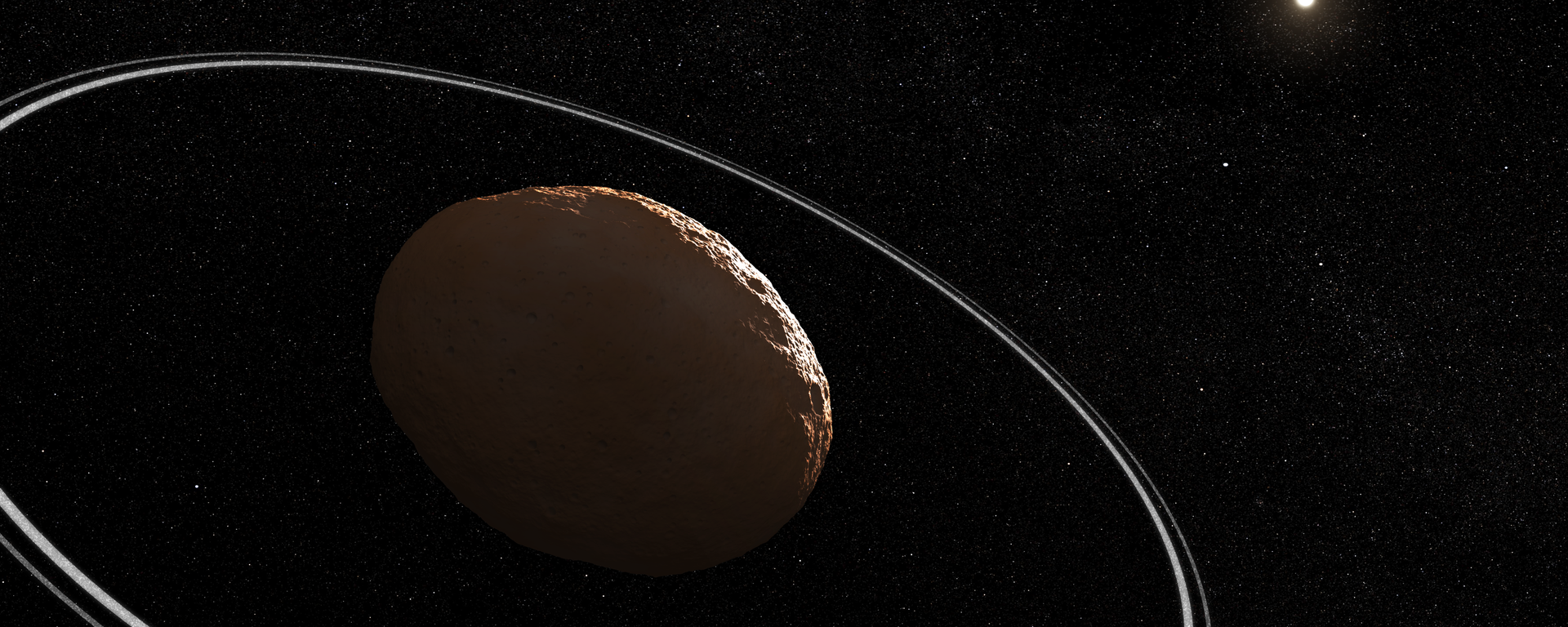https://sputnikglobe.com/20240220/most-luminous-object-in-the-known-universe-eats-a-suns-worth-of-material-every-day-1116884361.html
Most Luminous Object in the Known Universe Eats a Sun’s Worth of Material Every Day
Most Luminous Object in the Known Universe Eats a Sun’s Worth of Material Every Day
Sputnik International
The fastest growing black hole ever observed eats about the mass of the Sun every day, according to a new study by researchers at the Australian National University.
2024-02-20T04:04+0000
2024-02-20T04:04+0000
2024-02-20T04:04+0000
beyond politics
australian national university
science & tech
society
black hole
supermassive black hole
space
space exploration
https://cdn1.img.sputnikglobe.com/img/07e8/02/14/1116884201_0:38:1281:758_1920x0_80_0_0_2d1b310187eefdad9573c8a8640fcf95.jpg
Quasar J0529-4351 has been visible in sky surveys since 1980 but was only identified as the most luminous object in the universe last year and its ravenous appetite was just described in a study published on Monday. So bright was the object that it was previously misidentified as a foreground star.Quasars are the extremely bright center of a galaxy and are powered by supermassive black holes. The newly identified quasar comes from just 1.5 billion years after the Big Bang.Around a million quasars have been cataloged already.The newly discovered quasar is also the known universe’s fastest-growing black hole, a fact that is not surprising because luminosity and consumption go hand in hand when it comes to quasars. The researchers said it also has the largest accretion disk in the known universe, which is the field of debris being sucked into the black hole.It is, however, not the largest black hole in the known universe. That distinction belongs to TON 618, estimated to be large enough to fit 66 billion stars the size of our Sun inside of it. By contrast, the J0529-4351 quasar is estimated to be 17-19 billion times the mass of our Sun, still very large but not quite as large as the TON 618. While J0529-4351 is growing in size faster than TON 618, its rate of roughly 370 solar masses a year means it will be a virtual eternity before it catches TON 618 at its current rate of growth.Scientists still aren’t sure how the supermassive black holes that fuel quasars are formed. black holes are formed when a star collapses on itself. It can then grow by sucking in other celestial objects, including black holes, but that method of growth does not seem effective enough to create celestial objects the size of supermassive black holes.The researchers hope that studying an extreme quasar like this one will help them understand more about how supermassive black holes and galaxies are formed. They also believe that there are likely more extreme quasars out there, waiting to be discovered.The study was published in Nature Astronomy.
https://sputnikglobe.com/20240212/chunk-of-space-rock-could-have-rings-in-astronomical-first-1116734839.html
Sputnik International
feedback@sputniknews.com
+74956456601
MIA „Rossiya Segodnya“
2024
News
en_EN
Sputnik International
feedback@sputniknews.com
+74956456601
MIA „Rossiya Segodnya“
Sputnik International
feedback@sputniknews.com
+74956456601
MIA „Rossiya Segodnya“
j0529-4351, supermassive black hole, largest black hole, hungriest black hole, brightest quasar
j0529-4351, supermassive black hole, largest black hole, hungriest black hole, brightest quasar
Most Luminous Object in the Known Universe Eats a Sun’s Worth of Material Every Day
The black hole powering the most luminous object observed in the solar system is eating roughly the equivalent of the Sun every day through the gas and cosmic dust it sucks up.
Quasar J0529-4351 has been visible in sky surveys since 1980 but was only identified as the most luminous object in the universe last year and its ravenous appetite was just described in a study published on Monday. So bright was the object that it was previously misidentified as a foreground star.
Quasars are the extremely bright center of a galaxy and are powered by supermassive black holes. The newly identified quasar comes from just 1.5 billion years after the Big Bang.
“It is a surprise that it has remained unknown until today, when we already know about a million less impressive quasars. It has literally been staring us in the face until now,” Christopher Onken of the Australian National University (ANU) and one of the study’s authors said.
Around a million quasars have been cataloged already.
The newly discovered quasar is also the known universe’s fastest-growing black hole, a fact that is not surprising because luminosity and consumption go hand in hand when it comes to quasars. The researchers said it also has the largest accretion disk in the known universe, which is the field of debris being sucked into the black hole.
It is, however, not the largest black hole in the known universe. That distinction belongs to TON 618, estimated to be large enough to fit 66 billion stars the size of our Sun inside of it. By contrast, the J0529-4351 quasar is estimated to be 17-19 billion times the mass of our Sun, still very large but not quite as large as the TON 618. While J0529-4351 is growing in size faster than TON 618, its rate of roughly 370 solar masses a year means it will be a virtual eternity before it catches TON 618 at its current rate of growth.

12 February 2024, 03:01 GMT
Scientists still aren’t sure how the supermassive black holes that fuel quasars are formed. black holes are formed when a star collapses on itself. It can then grow by sucking in other celestial objects, including black holes, but that method of growth does not seem effective enough to create celestial objects the size of supermassive black holes.
The researchers hope that studying an extreme quasar like this one will help them understand more about how supermassive black holes and galaxies are formed. They also believe that there are likely more extreme quasars out there, waiting to be discovered.
“Personally, I simply like the chase. For a few minutes a day, I get to feel like a child again, playing treasure hunt, and now I bring everything to the table that I have learned since,” lead study author Christian Wolf, also from the ANU said.
The study was published in
Nature Astronomy.



